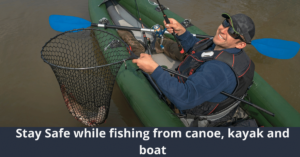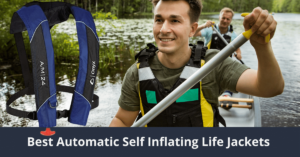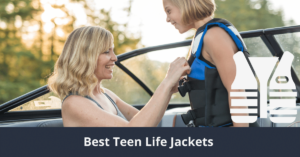Are you planning on taking the family out on the water this summer? Make sure you have everything you need to keep your family safe and comfortable before you go. You have the right life jacket for every member of the family, along with water and plenty of sunblock.
When choosing life vests for your children, make sure you consider their ages and weights as well as what sort of water activity you will be enjoying. In this guide, we will be discussing what to consider when purchasing the best kids life jackets for children who are 30-50 pounds or around 3 to 7 years old.
(If your kid is below 3 years of age, you should view: Best Toddlers Life Vests)
(If your kid is below 1 year of age, you should view: Best Infants Life Vests)
To help you choose, we have included some recommendations of the best life vests for kids on the market today as well as relevant information regarding how to select a life jacket and some safety and maintenance tips for getting the most use out of it this summer season.
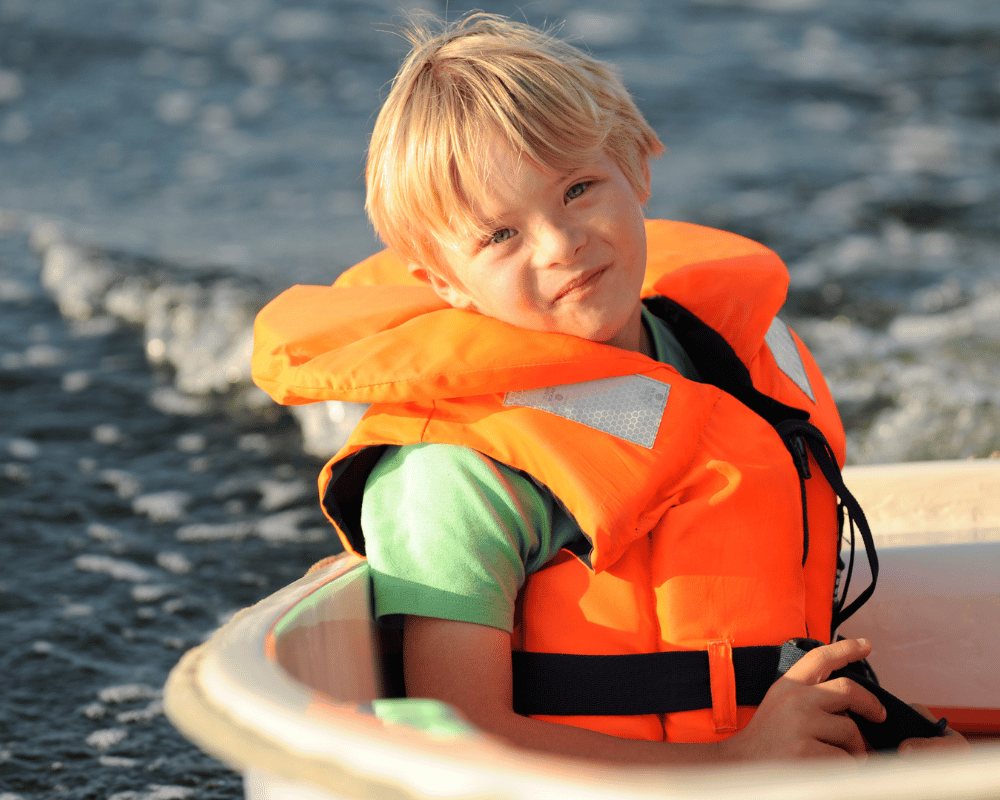
Everything you will learn here
- The Best Toddler Life Jacket 30-50 pounds
- 1. Stearn’s Child Classic Series Vest: Great Type 2 Life Jacket 30-50 lbs
- 2. SportStuff Child Life Jacket 30-50 lbs (Type 3)
- 3. Stohlquist Kids Life Jacket
- 4. O’Neill Child Superlite USCG Life Vest
- 5. ezdoit Kids Life Jacket Learn to Swim Life Vest for Children Toddler Floats Swim Vest with Arm Wings for Baby 30-50 lbs
- 6. Airhead WICKED Kwik-Dry Neolite Flex Life Vest
- 7. Oceans7 US Coast Guard Approved, Child Life Jacket
- Best Life Jackets for Kids 30-50 lbs Buyers Guide – (Your guide to selecting the best product)
- Best Kid’s Life Vest for Kids Comparison Chart
- Wrap Up: Best Toddler Life Jacket 30-50 pounds (3-7 years)
The Best Toddler Life Jacket 30-50 pounds
Following is the list of our Editor’s top picks for the best toddler life jacket for 30-50 pounds. Although the list is numbered, it’s in no particular order so that you can pick the best vest based on your needs rather than a rating.
1. Stearn’s Child Classic Series Vest: Great Type 2 Life Jacket 30-50 lbs
- US Coast Guard-approved child life vest
- Specially fitted for children weighing 30 to 50 pounds
- Durable nylon shell with PE flotation foam
This life vest comes with a nylon shell and PE flotation foam. It features three adjustable buckles and a leg strap for a secure fit and comes in red and blue color choices. It is US Coast Guard approved for boating, swimming, and activities like water tubing.
Although it’s a little bulky for swimming, it will work for your child as long as they are old enough to be able to flip themselves over. The life jacket buckles so that the child won’t easily get off the vest, but be aware the jacket does tend to fit a tad on the smaller side of the 30 to 50 lb range. Although it says it can fit 30 to 50 lbs between 36 to 40.5 lbs is probably the ideal weight for this vest.
Pros
- Durable Nylon outer shell won’t tear easily
- Features a leg strap for a more secure fit
- Buckles are hard for children to unsnap themselves
Cons
- Bulky for swimming
- Won’t flip them over in the water, so their head stays up
- Sizing runs small
Is your child not yet 30 pounds in weight? Don’t buy too big. We have listed other Life Jackets for Babies and Toddlers below 30 lbs here:
2. SportStuff Child Life Jacket 30-50 lbs (Type 3)
- US Coast Guard Approved: This personal flotation device meets USCG requirements. Less bulky design for use when quick response is likely and offers a larger range of motion
- Open Sided: Open sides allow for better ventilation to keep you cooler throughout the day. Designed for personal watercrafts and general boating safety
- Buckles: Three body belts with buckles. Side release buckles open and close quickly to ensure safety and security on the water. Children's life jacket features a crotch strap for added safety
The SportStuff Children’s Stars and Stripes Life Jacket is US Coast Guard approved for swimming, boating, tubing, and jet ski use. The vest has a polyester shell with lightweight Poly-E flotation foam inside. It features a patriotic stars and stripes design. The jacket is secured with three buckles and a crotch strap so it won’t ride up in the water. The material is stain and UV resistant, so it stands up well to both the water and the sunlight. It has open sides for a more comfortable fit.
This life vest is suitable for swimming, but won’t flip your child on their back in the water. Also, be aware the torso is a little short on this vest, but otherwise, it’s a good choice if you want something that will keep your child afloat without being too bulky.
The Sportsstuff jacket follows the sizing determined by the USGC and is designed to fit children that weigh 30-50 pounds and have a 22-25-inch chest size.
Pros
- US Coast Guard Approved
- Good for swimming
- Fun patriotic design
- Stain and UV resistant
Cons
- The torso is a little short for taller children
- Won’t flip your child on their back
- Design color may fade with use
3. Stohlquist Kids Life Jacket
- FEEL COMFORTABLE IN THE WATER - Made of soft foam for maximum comfort, this child personal floatation device comes with a convenient grab collar for easy retrieval. The head support collar offers the security for them to play and be happy in the water
- BUCKLE UP - The single quick release front buckle provides added security and even has an adjustable crotch strap to fit any size. You'll notice the durability of this kids life jacket from the box stitched buckle attachment that'll have you using this for years to come
- FEEL THE MOVEMENT - Life vests can be irritating for children. That's why we've made sure to design this kids PFD with full arm mobility so you can enjoy watching them play and swim
The Stohlquist Kid’s Life Jacket is an excellent choice if your child is an adventurous type in the water. It has both a zipper and a buckle to secure it. It also features a grab handle if you need to retrieve your child out of the water quickly. The jacket is denier nylon oxford for good durability in intense activity. This PFD is a Coast Guard approved Type III life vest so that it will flip your child face-up in the water. It also features a crotch strap for an extra secure fit and a wide neck for comfortable wear.
This life jacket comes in high visibility colors, so it’s easy to see your child in the water. The grab handle also works well if you’re trying to teach your little one to swim, and you don’t want them floating away.
Pros
- Type 3 jacket will flip your child face-up in the water
- Grab handle that you can grab if you need to get your child out of the water fast
- Zipper and buckle closure for added security
- High visibility colors
Cons
- Stains easily
- Flips up the minute child stops moving, so they can’t swim easily in it
- Less effective the closer your child is to 50 lbs
4. O’Neill Child Superlite USCG Life Vest
This vest has a Coated Polyester shell and a lightweight Polyethylene Foam interior, and Nylon straps. It has three buckles and a crotch strap for a secure fit. It’s a Type III vest so that it will keep your child’s head up in the water. This vest comes in four different color options and will work well for water sports, a day at the water park, or for supervised swimming.
This vest is US Coast Guard approved, but it does run a little small, so it may be a little tight if your child is on the higher end of the 30-50 lbs weight range. The vest design keeps the vest from riding up at the head; however, some children find the neck too tight and will feel this vest is uncomfortable.
Pros
- Coast Guard Approved
- Will keep child floating face-up
- Will not ride up at the neck
Cons
- Runs small
- Some children find the neck to tight to be comfortable
- Not great for swimming
5. ezdoit Kids Life Jacket Learn to Swim Life Vest for Children Toddler Floats Swim Vest with Arm Wings for Baby 30-50 lbs
This jacket helps children stay afloat while they are learning to swim. The exterior is a polyester fabric, and it features six layers of polyethylene inside for flotation. It has two side safety buckles for a secure fit.
This PFD is a swim vest and not designed for boating or other water activities. This vest is ideal if you want something a little more substantial than swimmies, but you don’t need a full-on vest as you would use for water sports.
It features kid-friendly designs to make it more appealing to them to wear and allows your child to swing his/her arms freely in the water. It’s perfect for teaching a beginning swimmer because it offers full mobility and rides a little lower than a typical flotation device while keeping your child’s head above water.
Pros
- Kid-friendly designs
- Offers more mobility than other life vests
- Great for teaching children to swim
Cons
- Not designed for boating or other water activities
- Arm floats will be long for children with small arms
- Not recommended for rough water
6. Airhead WICKED Kwik-Dry Neolite Flex Life Vest
- USCG APPROVED – this personal flotation device meets USCG requirements for a Type II (Infant) and III (Child) Life Jackets. Closed sides, buckle and zipper closures, additional crotch belt and rapid rescue handle for safety and peace of mind
- COMFORT and SAFTEY - Less bulky design for use when quick response is likely, offers a larger range of motion making it a favorite for water activities. Closed sides, zipper, crotch strap and double buckle closure keep life jacket securely in place, quick grab rescue handle provides a secure grip/lift option
- MATERIAL - Durable, Quick-drying, and super soft. This fabric stays comfortable against your child’s skin. Quick Dry Neolite is designed to wick away moisture and feel light and airy for a full day of fun on the water
This offering is another Type III vest that is US Coast Guard Approved. The Airhead uses polyester and closed-cell PVC foam. It closes with a zipper and two buckle strap and has a crotch strap as well. The buckles are easy for parents to get on and off, but too hard for children to do it themselves. The Neolite Flex Life is for boating and watersports but can be used for swimming as well.
This vest is close sided, and its segmented design makes it much more flexible than other vests, so its easier to move around in. This vest isn’t bulky, so most children will not find it uncomfortable to wear for a long time. The material is also softer than other life jackets, so if your child has sensitive skin, this will be comfortable and won’t cause rubbing and chaffing.
Pros
- Segmented design for extra flexibility
- The soft material is comfortable on sensitive skin
- Not bulky
Cons
- Fits tightly
- The zipper may dig into chin or neck on smaller children
- The zipper can break easily if forced
7. Oceans7 US Coast Guard Approved, Child Life Jacket
- US Coast Guard-approved: Personal flotation device (PFD) passes highest USCG standards and testing; life jackets are labeled for infant, child or youth by weight range
- USCG-approved sizing: Child-size PFD for use with children that weigh 30-50 pounds; actual comfort, fit and sizing will vary; If weight is over 45 pounds, try youth size; life vest should not rise above the child’s head when securely fastened
- Open-side design: PFD has 3 adjustable straps and an open-sided design for a comfortable fit; chest straps lengthened for maximum size and fit range; recommended for chest sizes 20-25 inches
This life jacket is a Coast Guard-approved Type III life jacket designed for swimming and boating. It’s multi-functional for use in pools, lakes, or oceans. The Ocean’s 7 Child Life Jacket contains Nylon and EPE floatation foam. It has an open-sided design with two adjustable buckles on the chest and a third for between the legs.
This jacket won’t keep a child face-up in water, so be aware if you are concerned about keeping your child afloat in case of an accident. The PFD fits true to size and won’t ride up over the head while floating. However, if your child is at the 50 lb mark, you may want to purchase a youth rather than a child-size jacket.
(If you want to read the reviews of best youth life vest, please visit: Best Youth Life Vests)
The big drawback is that the crotch strap is rough and stiff and may cause chaffing if there isn’t enough padding, so you may want to put something around the piece if your child is wearing it with a bathing suit.
Pros
- Coast Guard Approved
- Fits true to size
- Multi- functioning PFD
Cons
- The crotch strap can cause uncomfortable chafing
- Won’t keep your child face-up in the water
- It takes a long time to dry
Best Life Jackets for Kids 30-50 lbs Buyers Guide – (Your guide to selecting the best product)
Now that we’ve looked at some recommended vests available on the market, it’s time to get into the nitty-gritty of choosing the safest jacket for your child. While some jackets are multi-functional, others should only be used for particular activities and are only safe for specific ages and abilities.
Types of Life Vests
The United States Coast Guard categorizes life vests into four different types in a numerical system. The different numbers will tell you what kind of activity the PFD is safe for. Life jackets classifications are Type I, Type II, Type III, and Type V. Type IV flotation devices are throwable devices like lifebuoys rather than PFDs that you wear.
Type I
Type I life vests have the highest buoyancy and significantly increase an accident victims chance of survival in extreme circumstances. The type I design turns someone unconscious face up, putting them in a vertical and slightly backward leaning position.
The type I jacket is designed for survival in rough waters when you’re boating alone or for when you’re somewhere remote where it may take a while for help to come. Type I jackets have extra fabric and foam to help you retain your body heat in the water longer and keep you floating higher up than other life preservers.
However, while they offer the best protection, they are also the bulkiest and uncomfortable type of vest. If you plan on cruising or fishing offshore, you’ll probably want to have a Type I, however for calmer waters and inland boating, it isn’t usually necessary to have such a heavy-duty life jacket.
Type II
A type II life vest is probably all you’ll need if you’re planning a leisurely day of inland cruising in a light-craft or want to go fishing or sailing. Most of the recommended jackets above are either Type II or Type III.
Type II life jackets work best in calmer waters where you can get help reasonable quickly. Type II jackets tend to be much more comfortable than Type I’s, but are not as buoyant. However, Type II’s will also turn some unconscious people face up in the water.
Type III
Type III life jackets are not for survival. Type III will require a person to be conscious and able to flip themselves over if they are in the water into an upright position. Type III’s design lends itself best to activities like fishing, canoeing, kayaking, dinghy races, and use with a jet ski or other personal watercraft. They are best for using inland where help can reach you quickly.
Type III is more comfortable than the first two types but also offers less buoyancy. However, if you’re looking to do activities in calmer waters like ponds or lakes or you’re planning on visiting a waterpark or just teaching your kid to swim in a pool, a Type III life jacket is likely all you need.
Type V
Type V life vests are for minimal and specific uses. If you’re planning on taking the family white water rafting trip, getting out on paddleboards, or going windsurfing, Type V jackets are necessary and must be on at all times. The label on the vest or box will tell you exactly what type of activities the vest is for.
Type V’s are another non-survival type of PFD that should only be used near shore where help can get to you quickly without you having to float in the water for hours. They are NOT intended for motorboating or other activities in open water. They require the wearer to be conscious to stay face up.
Type II vs. Type III
Most children’s life vests, for general use, are Type II and Type III. Most Type II vests are designed for infants and toddlers, while Type III vests are common for older children. Both designs are for situations where you’ll get help quickly.
Type II vests for children keep kids faces up in the water whether they are conscious or not and don’t require any effort to stay in that position on the children’s part. Type III vests will also keep a child face-up, but will usually need the child to maneuver their body and tilt their head back slightly to get into that position.
Type III vests tend to be more comfortable and allow more movement than type II vests. They are also the most multi-functional both for use in swimming and water sports.
Life Jacket Performance Levels
Along with different types of life jackets, You also have different performance levels. Performance levels refer to how long the life jacket will keep you safe while you wait for assistance or swimming to shore.
Most commercial life jackets sold will be within the following performance levels.
- Level 50- This level life jacket is more of a support level, meaning that the wearer should be a competent swimmer already and should be close to shore where the person can get help quickly.
- Level 70- This is another low level for individuals who have help close at hand or are close to shore and can get safely there. They don’t have to be competent swimmers, but they do need to be able to get out of the water fairly quickly because they won’t keep the person safe for a long time.
- Level 100- This level life jacket will keep a person safe if they need to wait for rescue, but they are doing so in calm water. If the water is choppy, this level will not be adequate for long.
- Level 150- This level life jacket will work by itself or with bad weather gear and will turn an unconscious person in a safe position.
- Level 275- This level, if the highest level, a commercial life jacket, will likely come in. This level is for offshore excursions and usually extreme conditions. It’s unlikely you’ll need this level of life jacket on the water for a family day trip.
How to Measure the Fit of a Life Vest for Your Kid
When an adult measures themselves for a life preserver, they need to measure their chest size, but for children, PFDs go by weight. Generally, children’s life vests come in three sizes.
Your child may not be happy about it, but the life jacket needs to fit a little snugly to keep your child safe. To make sure the jacket fits correctly, pick your child up by their shoulder when they are wearing the vest and make sure their chin and ears don’t slip through. If they do, the jacket is too loose, and either needs to be tightened or even sized down.
If you think sizing will be a problem, try to get a vest with more buckles because the more buckles it has, the more customized a fit you can get.
It may be tempting to purchase a life jacket that is a little larger for more seasons of youth resistance. You want a life jacket that fits them well in the present, even if it seems like it will be too small the following summer as it is crucial for their safety that they can’t possibly slip out of it at any time.
Maintaining Your Kid’s Life Vest
Just like other equipment used in water life vests have to be maintained in order to keep them performing at their best. Check for any damage at the start of every season due to tears, mildew, punctures or leaks, and continue to check throughout the season after each use.
At the end of the day, make sure it air dries completely before storing it. However, keep the life vest away from radiators or other heat sources. Also, never use an iron on the vest or put it in a dryer, because it will ruin the jacket’s buoyancy.
Wash the life vest by hand or surface wash it only without harsh chemicals or detergents as these will also ruin the jacket’s buoyancy. After the jacket is dry, store it in a well-ventilated place.
Don’t leave the vest stored in a compartment in the boat for a long time. PFDs should come out of the boat after every trip. Another thing to be aware of is not to pile other objects on top of the life jackets in the boat. Piling other stuff on top of the life vests could cause rips or punctures in the vest and ruin it, and you might not even realize the damage until it’s too late.
Safety Tips for Life Jacket Usage
Different states have different laws regarding the use of life jackets. However, the general rule of thumb is that any child under the age of 13 must wear a life jacket on a boat. When deciding what life jacket to purchase, consider the type of activity your child will be engaged in when using the life vest. Check the label to make sure the vest you are considering purchasing is appropriate for the type of water activity.
It cannot be stressed enough. Read The Labels. In recent years the US Coast Guard has begun the process of changing their labels, so they are easier for people to read and understand. The label will tell you:
- The weight capacity for the jacket
- Performance level
- Buoyancy level
- Information regarding if the jacket will turn your face up or not
- The intended uses
- Care instructions
If possible, test out the life jacket in a controlled environment like a pool to see how it floats before taking it out on open water. Kid’s bodies float differently, so you want to be absolutely positive the life jacket you’ve purchased for them will keep their head above water.
Before you go out on the water, make sure you have enough life jackets for everyone. Also, check the condition of all the PFDs so you know for certain they’re all serviceable.
If your child has a life jacket from a previous season, make sure they try it on at the start of the new season to see if it still fits them. Adult life vests should get replaced after ten years, but children’s life vests will need replacing more often since they will likely outgrow them quickly.
Small children should wear a life jacket anytime they are near the water whether or not they are actually in the water because even a small amount of water can drown a child that slips. This rule also applies to docks because a child can easily slip or trip and end up in the water.
Even when children are wearing life jackets, they should still be accompanied by an adult when swimming because accidents can always happen.
Getting Your Child Accustomed to Wearing a Life Vest
You could do all the research in the world and find the perfect life vest for your child, but if he or she doesn’t want to wear it’s going to be a problem for the whole family. To avoid the waterworks and tantrums and help everyone enjoy their time on the water, getting your child accustomed to wearing a life jacket beforehand is a good idea.
Allow your child to wear their life vest walking around on land before they go anywhere near the water, so they get accustomed to the way it feels. Take your child to a pool and try letting them use it there before heading to the beach or lake.
You can also make a game out of it and race them to put on your life jackets, or even add it to their collection of dress-up clothes, so they begin to associate the jacket with something fun. As you are getting ready to head out, tell you, children, the steps you’ll be following, so they know what to expect.
For example, saying something like “first we’re going to drive to the marina then we’re going to put our life jackets on” so they know what to expect, and it doesn’t catch them by surprise. Many times children just want to know what’s going on, so mentally preparing them in this way helps them get used to the idea, and diffuse a situation before it happens.
If possible, try to get all the adults and any teens onboard also to wear life jackets, so the children see them and follow their lead. If everyone is wearing a life preserver, it will get into your kid’s head. They will think it is what people do when they go near the water and normalizes it for them.
Best Kid’s Life Vest for Kids Comparison Chart
| Product Name | Price | Sizes (Fit for) | Safety | Unique Features |
|---|---|---|---|---|
| Stearn•s Child Classic Series Vest | $ | 30-50 lbs | Three adjustable buckles and a leg strap for a secure | Buckles are hard for children to unsnap themselves |
| SportStuff Children•s Stars and Stripes Life Jacket | $ | 30-50 lbs | US Coast Guard approved | Stain and UV resistant, Fun patriotic design |
| Stohlquist Kids Life Jacket | $ | 30-50 lbs | Coast Guard approved Type-III, Zipper and buckle closure for added security | High visibility colors |
| O•Neill Child Superlite USCG Life Vest | $ | 30-50 lbs | Coast Guard approved | Will keep child floating face-up, Will not ride up at the neck |
| ezdoit Kids Life Jacket Learn to Swim Life Vest for Children Toddler Floats Swim Vest with Arm Wings for Baby 30-50 lbs | $ | 30-60 lbs | Two side safety buckles for a secure fit | Offers more mobility than other life vests |
| Airhead WICKED Kwik-Dry Neolite Flex Life Vest | $ | 30-50 lbs | US Coast Guard approved Type-II | Segmented design for extra flexibility |
| Oceans7 US Coast Guard Approved, Child Life Jacket | $ | 25-45 lbs | Coast Guard approved Type-III | Multi- functioning PFD |
Wrap Up: Best Toddler Life Jacket 30-50 pounds (3-7 years)
Spending time on the water with your family can be magical and create many great memories that your children will treasure for years to come. However, as fun as the water is, it’s also dangerous. By taking proper precautions, you can keep your entire family safe and happy as you enjoy your time on the water.
More than 2/3 of boat fatalities are the result of drowning, and 90% of those victims were not wearing a life vest. It may be a grim statistic, but it’s also a very powerful one. Wearing a life jacket can mean the difference between life and death for everyone, children, and adults alike.
Under the law in most states, children under 13 legally must wear a life jacket. They are only allowed to be onboard without a life jacket if they are in a closed cabin below deck. This fact is why it is crucial to find a well-designed, well-fitting life jacket appropriate for your child. Kid’s life jackets will generally come in Type III and Type II jacket types depending on your child’s age and ability.
You should always check the label for the most accurate weight range and level of buoyancy, as well as the type of water activities the jacket is appropriate for. The US Coast Guard should approve any life jacket used for boating or other water sports.
The key to keeping life jackets working at top performance is proper maintenance. Making sure to air-dry your jacket out entirely and store it properly will add a great deal to the jacket’s lifespan.
Of course, the lifespan of the jacket may outlive the lifespan of its usefulness for your child. As your children grow and their bodies change, their PFD needs rechecking seasonally to make sure they still fit your child correctly. Keeping that in mind, with proper maintenance and regular checks, a well-designed life jacket should last for several summer seasons.
You might also want to check out our guide on the 7 Best Coast Guard Approved Puddle Jumpers that we reviewed in another article you shouldn’t miss reading. Teenagers will stay safe on the water with our picks of the 7 Best Youth Life Vests, which are recommended for most water sports even if your teenager is a good swimmer.
Last update on 2024-04-24 / Affiliate links / Images from Amazon Product Advertising API

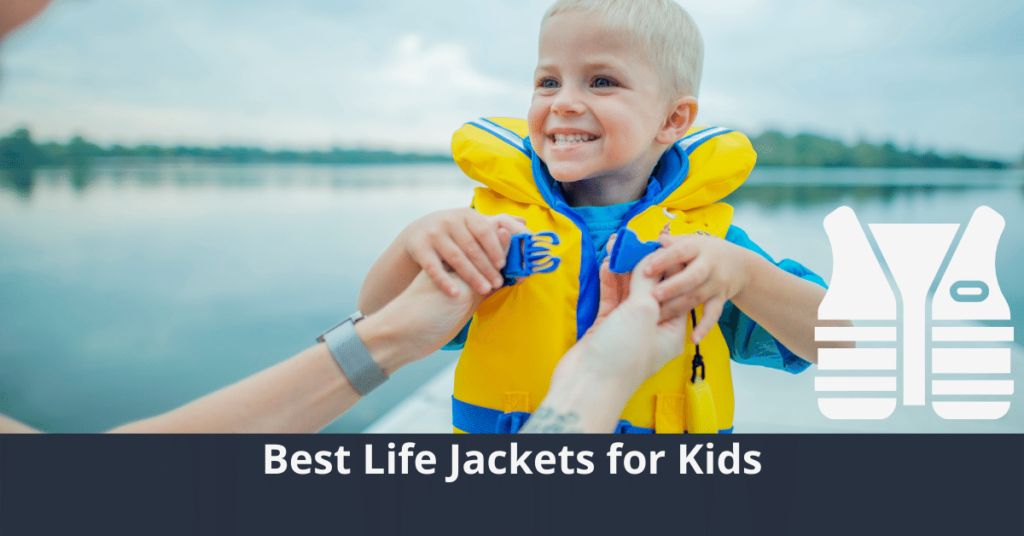

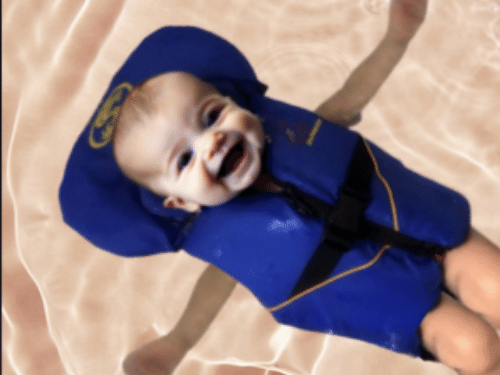
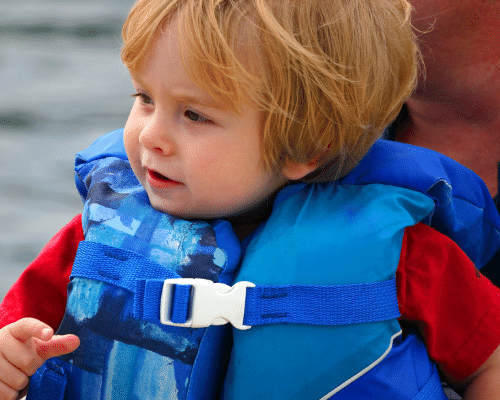






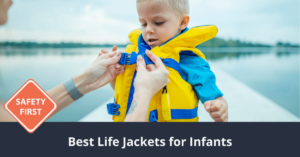
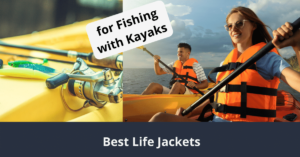


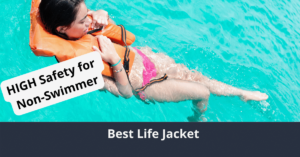
![7 Best Jet Ski Life Jackets with awesome fit [2023 guide] 18 Best Jet Ski Life Jacket](https://insmoothwaters.com/wp-content/uploads/2022/09/Best-Jet-Ski-Life-Jacket-300x157.png)
